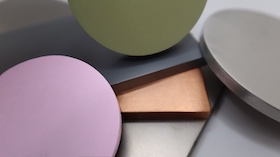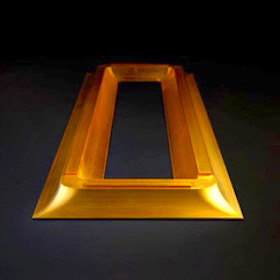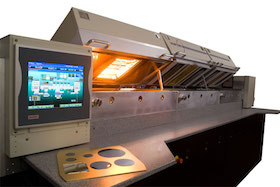Ultra-High Vacuum Secondary Ion Mass Spectronetry for the Analysis of Lipid Species and Cholesterol
Dr. Megha Agrawal and Dr. Shyamasri Biswas






Quantum sensing based on solid-state spin defects provides a uniquely versatile platform for nanoscale magnetometry under diverse environmental conditions. Operation of most sensors used to-date is based on projective measurement along a single axis combined with computational extrapolation. (click for more)
Angstrom Scientific is proud to announce its appointment as the U.S. distributor for Radalytica, a technology leader in robotic X-ray imaging and computed tomography (CT) systems for non-destructive testing (NDT) and materials characterization. (click for more)
MKS is proud to announce the release of our new Process Technologies in Advanced Packaging Handbook. This handbook provides a comprehensive guide exploring heterogeneous integration and cutting-edge interconnect technologies, the key to sustaining Moore’s Law in the post-scaling era. (click for more)
According to new research from Counterpoint Research’s AI 360 practice – ‘What’s Next for AI: How Will It Shape the Semiconductor Market’, semiconductor revenues are estimated to double from 2024 to 2030 to reach over $1 trillion, driven by the global AI transformation to build infrastructure and consumption end points for GenAI to Agentic AI to Physical AI applications. (click for more)







Since 2000 Vacuum Technology & Coating Magazine has been the industry's leading source for the latest articles, news, and product and service information. Below we describe some of the terms that you will find in a typical issue of VT&C.
Vacuum Coating (Vacuum Deposition and Thin Film Deposition) is the process of depositing a film or other material atom by atom or molecule by molecule onto a surface in a low pressure environment or vacuum.
Physical Vapor Deposition or PVD refers to vacuum deposition methods which involve the material (which is being deposited) going from a condensed phase to a vapor phase and then to a thin film condensed phase. Sputtering and evaporation are common PVD processes.
Sputtering refers to a type of process used to deposit thin films and employs a plasma to bombard and eject atoms from a target source.
Evaporation refers to the heated source material being evaporated in a vacuum. Vacuum allows vapor particles to travel directly to the target object, where they condense back to a solid state. (called a Deposition Source) refers to a type of process used to deposit thin films and employs a plasma to bombard and eject atoms from the target source (called a Deposition Source).
Vacuum Hardware refers to the types of hardware and components that are used in the vacuum process. There are many types of hardware used in this process, some examples are flanges, fittings, seals, valves, and chambers.
Thin Film Metrology involves determining the optimal thickness, composition and/or condition of a coating through various techniques and mathematical calculations.
Gas Analytical Systems are used in the analysis of residual gases within a low pressure environment or vacuum.
Vacuum Pumps are devices that remove gas atoms and molecules for the purpose of leaving behind a partial vacuum. Some examples of types of vacuum pumps are rotary vane pumps, diaphragm pumps, and scroll pumps.
Every issue of VT&C includes a product showcase focused on a specific topic relevant to Vacuum Processing, please see our editorial calendar which lists the topic for each issue.